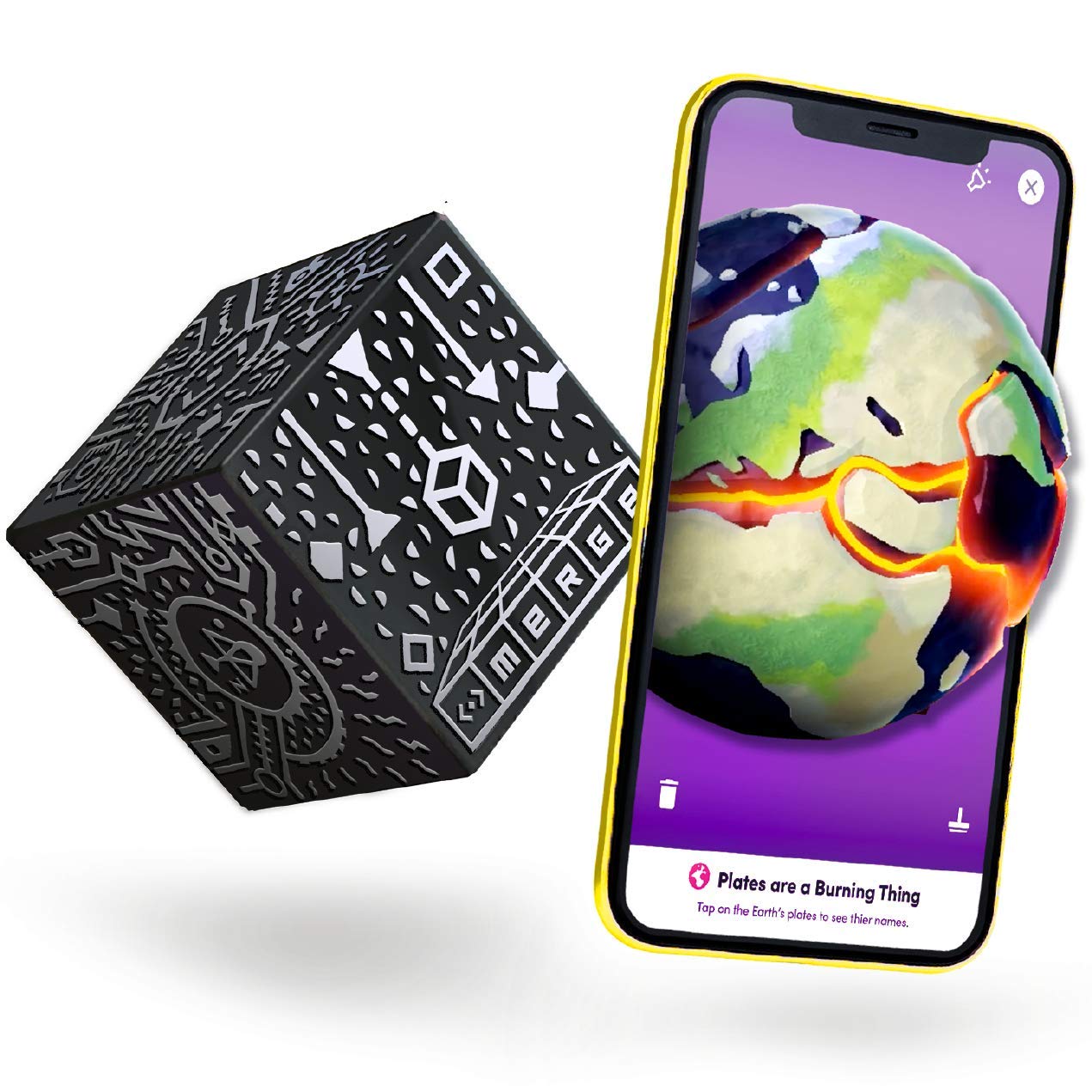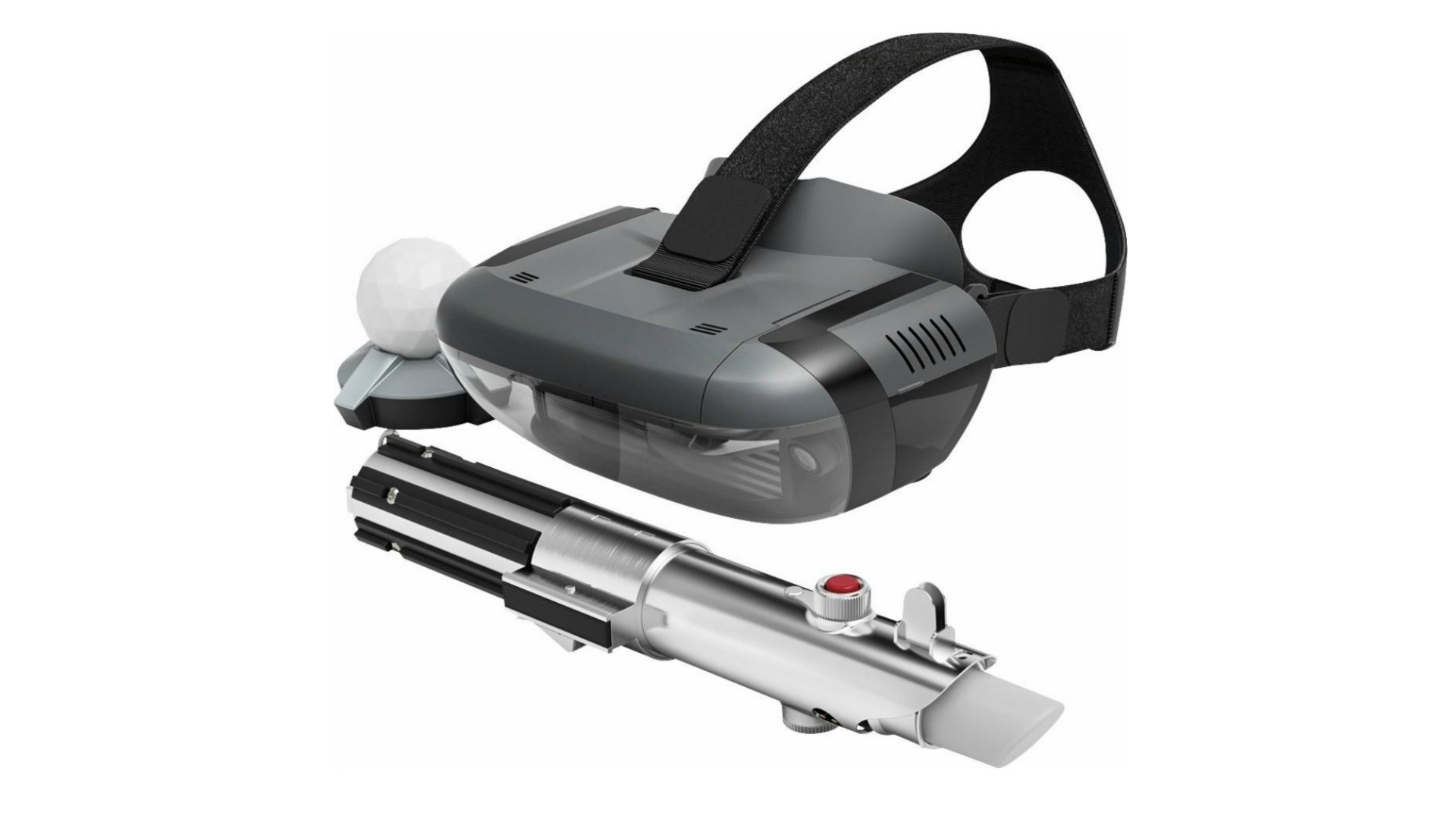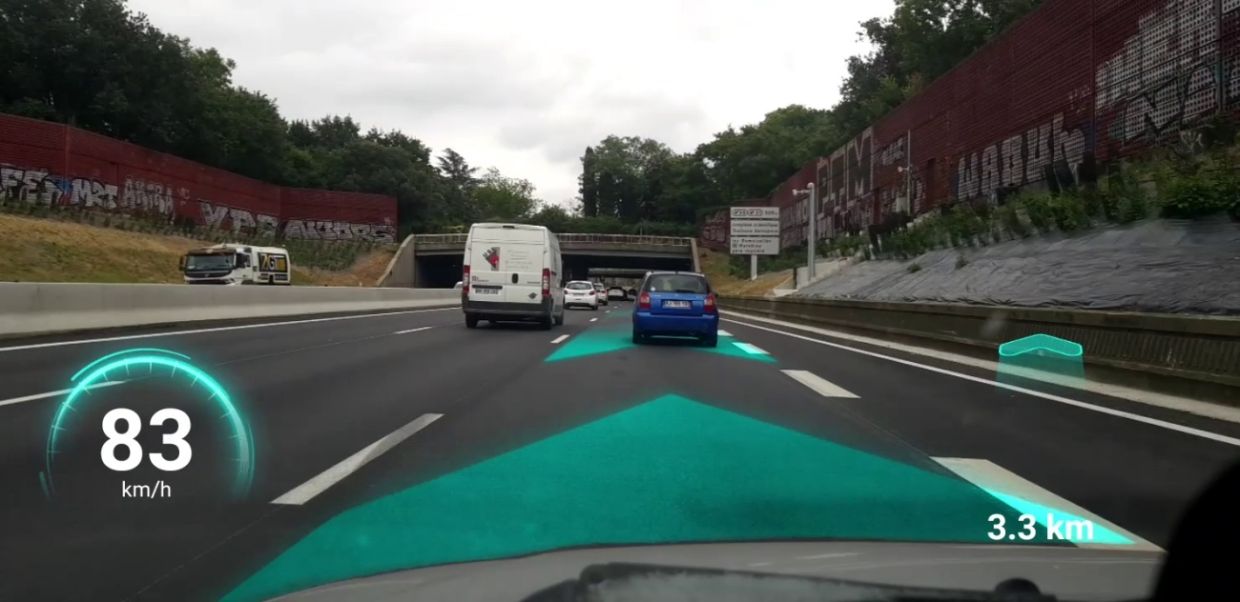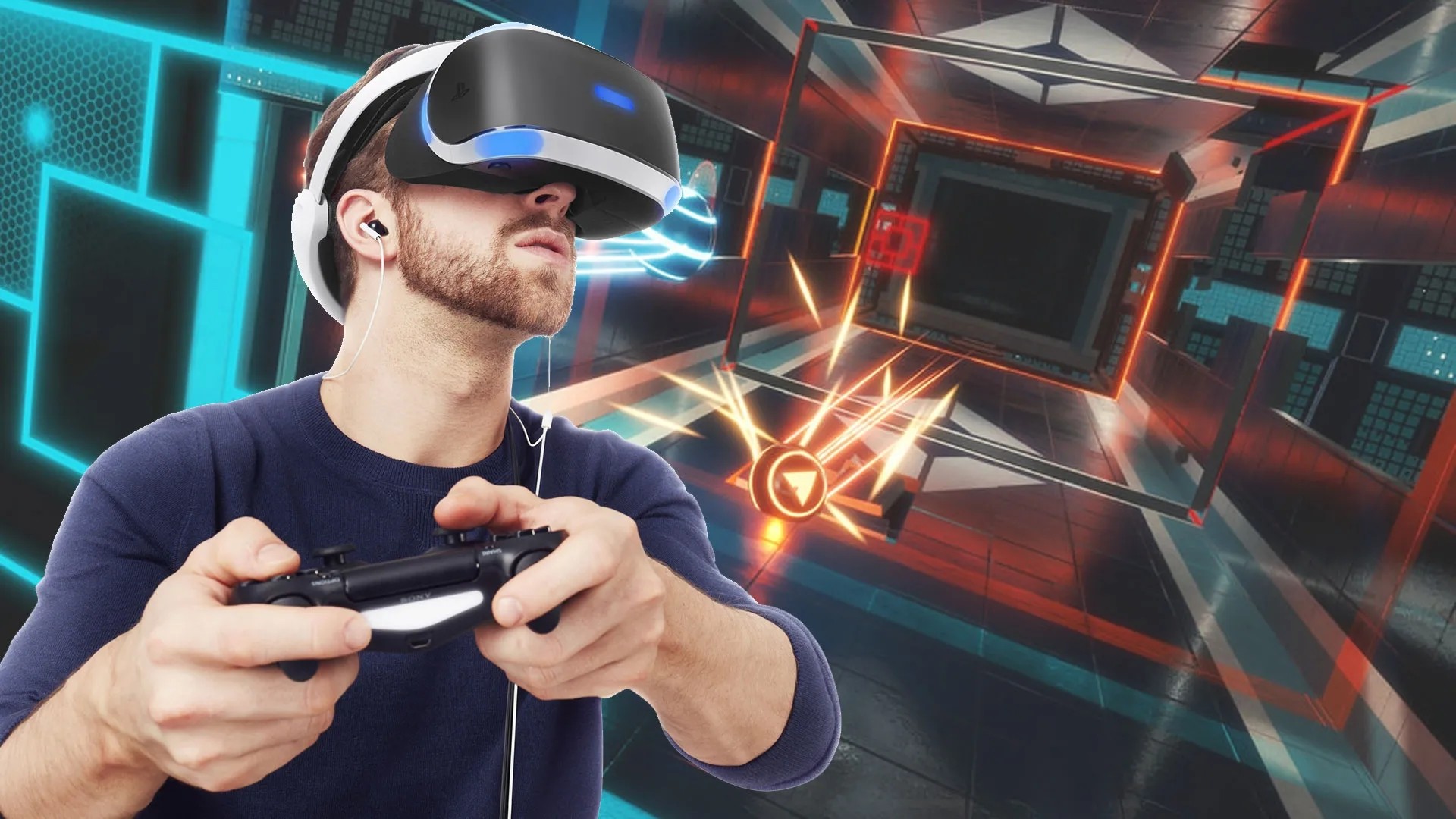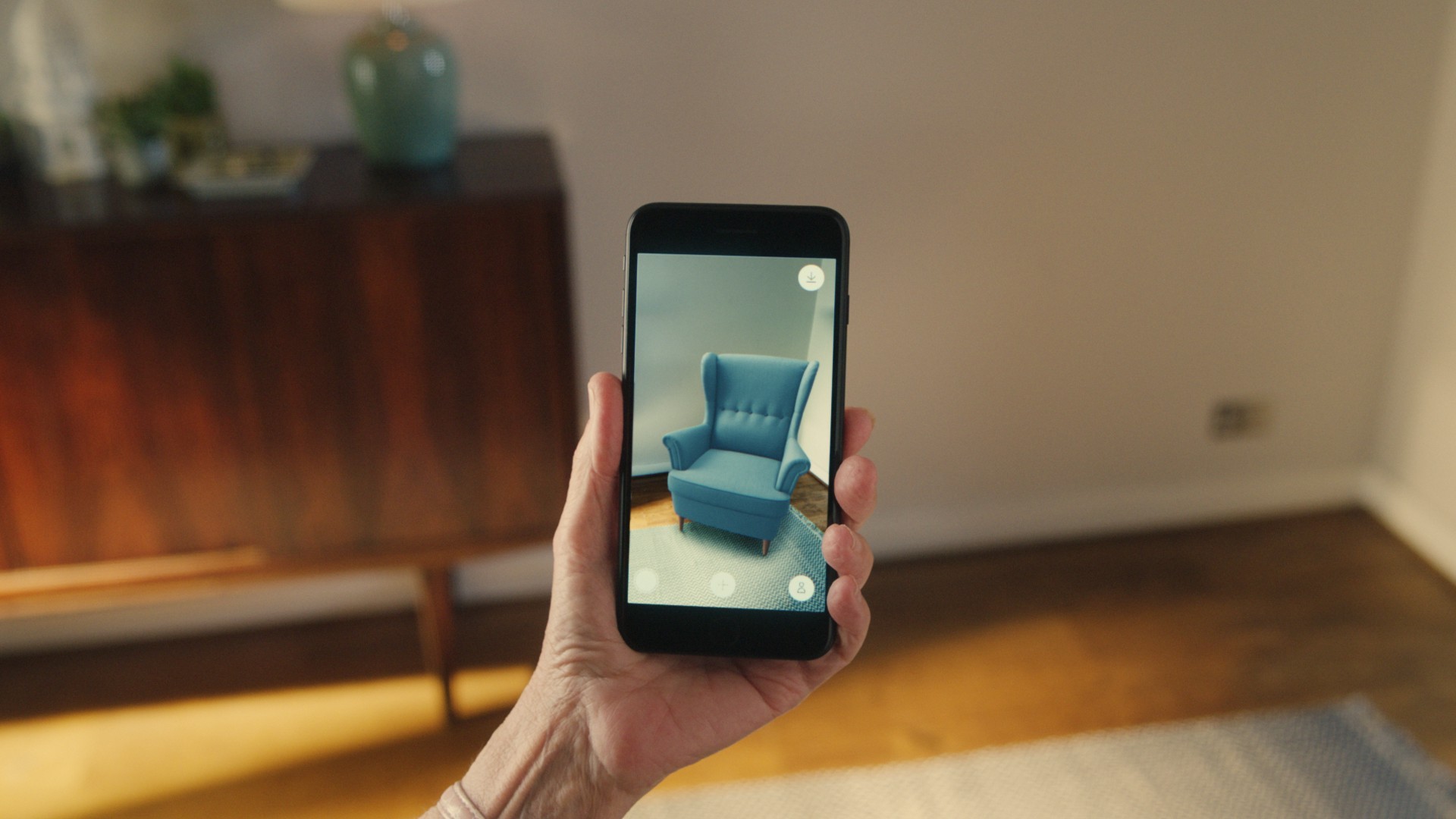Introduction
Welcome to the fascinating world of augmented reality (AR) business cards! In today’s digital age, traditional business cards alone may not leave a lasting impression on potential clients or employers. That’s where augmented reality comes in. Augmented reality business cards take your networking game to the next level by seamlessly integrating digital content into the physical world.
Augmented reality refers to the technology that enhances our perception of reality by overlaying digital elements onto the physical environment. It creates an interactive and immersive experience that captivates users and adds a wow factor to your business card.
So why should you consider using augmented reality for your business cards? The benefits are numerous. First and foremost, AR business cards make a memorable impression. They leave a lasting impact on the recipient and ensure that your brand or personal information stands out from the crowd. With augmented reality, you have the opportunity to showcase your creativity, innovation, and technological prowess.
Secondly, augmented reality business cards allow you to provide more information than a traditional card can hold. With a simple scan or tap, users can access additional content, such as videos, images, social media profiles, or even product demos. This interactive experience engages the recipient and gives them a deeper insight into your brand or services.
Furthermore, AR business cards can be easily updated and customized. Unlike traditional cards that become outdated once your contact information changes, augmented reality business cards can be dynamically updated with the latest information. This flexibility ensures that your card always reflects the most up-to-date details and keeps your connections informed.
Now that you understand the benefits of augmented reality business cards, you might be wondering how to create one. Don’t worry; in this article, we’ll guide you step-by-step through the process of creating your very own AR business card. From selecting the right design to adding augmented reality elements and distributing your card, we’ve got you covered.
So let’s dive in and explore the world of augmented reality business cards, where your card will become a captivating gateway to your brand and open doors to new opportunities.
What is Augmented Reality?
Augmented reality (AR) is an innovative technology that blends the physical world with digital elements, enhancing our perception of reality. It overlays computer-generated images, videos, or 3D models onto our real-world environment, creating an interactive and immersive experience.
Unlike virtual reality, which completely immerses users in a simulated environment, augmented reality enhances our existing reality by adding virtual elements. It can be experienced through various devices, such as smartphones, tablets, smartglasses, or headsets.
The concept of augmented reality can be traced back to the 1960s, but recent advancements in technology have brought it into the mainstream. Today, augmented reality is used in various industries, including gaming, entertainment, education, marketing, and even healthcare.
There are two main types of augmented reality: marker-based and markerless.
Marker-based augmented reality relies on visual markers, also known as fiducial markers, to trigger the digital content. These markers are usually recognizable patterns or QR codes that are scanned by the AR device, which then overlays the virtual elements onto the marker’s position.
On the other hand, markerless augmented reality uses natural features, such as object recognition, GPS, or motion tracking, to anchor the virtual content in the real world. This technology allows the virtual elements to interact with the physical environment, creating a more seamless and immersive experience.
The applications of augmented reality are vast. In gaming, AR allows players to interact with virtual characters or objects in their real-world surroundings. In education, AR can bring textbooks to life by overlaying interactive graphics and animations onto the pages. In marketing, businesses can use AR to provide virtual product demonstrations or simulate real-world scenarios.
The possibilities are endless, and as the technology continues to evolve, augmented reality is likely to play an even more significant role in our daily lives. It has the potential to revolutionize how we learn, work, shop, and entertain ourselves.
In the next section, we will explore the benefits of using augmented reality specifically for business cards, and how it can transform your networking approach into a memorable and engaging experience.
Benefits of Augmented Reality Business Cards
Augmented reality (AR) business cards offer a wide range of benefits that set them apart from traditional paper cards. By incorporating AR technology into your business cards, you can create a unique and memorable experience for your recipients. Here are some key advantages of using augmented reality for your business cards:
1. Memorable and Impactful: AR business cards leave a lasting impression on the recipients. By adding interactive digital elements to your card, you can capture the attention of potential clients or employers and make your brand stand out from the competition.
2. Enhanced Engagement: Augmented reality engages the recipients in a more immersive and interactive way. With a simple scan or tap, users can access additional content, such as videos, product demos, or social media profiles. This interactive experience creates a deeper connection with your brand and encourages further engagement.
3. More Information in a Compact Format: Traditional business cards have limited space to convey information. With AR business cards, you can provide additional details and multimedia content without cluttering the physical design. This allows you to showcase your portfolio, testimonials, or product information in a compact and interactive format.
4. Dynamic and Updatable: Unlike paper cards that become outdated when your contact information or business details change, AR business cards can be easily updated and customized. You can edit and update the digital content associated with your card to reflect the latest information, ensuring that your connections receive accurate and up-to-date details.
5. Showcasing Creativity and Innovation: Augmented reality is still a relatively new and exciting technology. By incorporating it into your business cards, you demonstrate your creativity, innovation, and willingness to embrace new technologies. This can leave a lasting positive impression and position you as a forward-thinking professional.
6. Trackable Interactions: AR platforms often come with analytics and tracking capabilities, allowing you to monitor how recipients interact with your business card. You can gain insights into which parts of the content are most viewed, how long users engage with it, and other valuable data for evaluating your marketing efforts.
7. Versatility and Flexibility: Augmented reality can be utilized in various industries and professions. It’s not limited to specific sectors, making it a versatile tool for anyone looking to add a digital and interactive touch to their business cards. It opens up creative possibilities for professionals in design, marketing, real estate, fashion, and more.
By leveraging the benefits of augmented reality business cards, you can create unique and engaging experiences that leave a lasting impression on your recipients. In the next section, we’ll guide you through the step-by-step process of creating your own AR business card.
Augmented Reality Platforms for Business Cards
With the increasing popularity of augmented reality (AR) business cards, there are several platforms and tools available to help you create and design your own interactive cards. These platforms provide a user-friendly interface and offer features to enhance the AR experience. Here are some popular augmented reality platforms to consider:
1. ZapWorks: ZapWorks is a powerful AR platform that allows you to create interactive experiences for various applications, including business cards. It offers a drag-and-drop editor, pre-built templates, and a rich library of 3D models, animations, and effects. With ZapWorks, you can easily add videos, images, buttons, and other interactive elements to your business card design.
2. BlippAR: BlippAR is a versatile AR platform suitable for creating engaging business card experiences. It offers a range of features, including image recognition, face tracking, and location-based AR. BlippAR allows you to create AR content using their web-based editor or integrate their SDK into your own mobile apps.
3. HP Reveal (formerly Aurasma): HP Reveal is an intuitive AR platform that enables you to create interactive content for your business cards. It offers a simple web-based interface for designing AR experiences and supports image recognition and tracking. HP Reveal also provides analytics to track user interactions and measure the success of your AR campaigns.
4. Layar: Layar is a popular AR platform that allows you to augment your business cards with videos, links, social media profiles, and other interactive elements. It offers an easy-to-use web-based editor with drag-and-drop functionality. Layar also provides an API for developers to integrate their AR technology into custom applications.
5. Metaverse: Metaverse is a user-friendly AR platform that offers a range of customization options for creating interactive business cards. It supports image recognition, geolocation, and scripting capabilities to create dynamic AR experiences. Metaverse also provides analytics to track user engagement and measure the impact of your AR campaigns.
6. Unity AR Foundation: If you’re a developer or have coding experience, Unity AR Foundation is a powerful AR platform to consider. It provides a robust framework for creating augmented reality experiences that can be integrated into mobile apps. Unity AR Foundation supports marker-based and markerless AR, allowing you to create highly customized and immersive business card experiences.
These platforms offer a combination of user-friendly interfaces, customization options, and interactive features to bring your augmented reality business cards to life. Depending on your requirements and level of expertise, you can choose the platform that best suits your needs. In the next section, we’ll guide you through the step-by-step process of creating your own AR business card, regardless of the platform you choose.
Step-by-Step Guide to Creating an Augmented Reality Business Card
Creating an augmented reality (AR) business card may sound like a complex process, but with the right tools and guidance, you can design an interactive and engaging card. Here is a step-by-step guide to help you create your very own AR business card:
Step 1: Define your Objective: Determine your goals and objectives for creating an AR business card. Consider what information or content you want to showcase and how you want to engage your recipients.
Step 2: Choose an Augmented Reality Platform: Select an AR platform or tool that aligns with your needs and preferences. Consider factors such as ease of use, available features, customization options, and compatibility with your desired devices.
Step 3: Design your Business Card: Create a visually appealing design for your business card. Consider incorporating your brand elements, such as logos, colors, and fonts, while leaving space for the AR elements. Remember to keep the design clean and uncluttered to ensure readability.
Step 4: Identify AR Trigger: Determine the trigger for your AR content. This can be an image, a QR code, or any other visual marker that will prompt the AR experience when scanned or viewed through an AR-enabled device. Ensure that the trigger is easily recognizable and related to your brand or content.
Step 5: Create AR Content: Generate the digital content you want to overlay on your business card. This can include videos, images, 3D models, buttons, links, social media profiles, or any other interactive elements. Consider the user experience and how the content will enhance engagement with your brand.
Step 6: Upload AR Content: Upload your AR content to the chosen platform. Follow their guidelines and requirements for file formats and sizes. Ensure that the content is properly aligned with the trigger and optimized for a seamless AR experience.
Step 7: Test and Preview: Test your AR business card by scanning or viewing it through an AR-enabled device. Make sure the trigger properly activates the AR content and that it is displayed correctly and in alignment with your design. Check for any errors or issues, and make necessary adjustments.
Step 8: Finalize and Refine: Once you are satisfied with the AR experience, finalize your design and content. Double-check all the information on your business card, including contact details, social media handles, and website URLs, to ensure accuracy.
Step 9: Print and Distribute: Print your AR business cards using high-quality materials to ensure clear visibility and durability. Start distributing your cards at networking events, conferences, meetings, or any other occasion where you can make valuable connections.
Step 10: Promote and Share: Leverage digital and online channels to promote and share your AR business card. Share it on social media platforms, your website, or through email marketing campaigns. Encourage recipients to share their experiences with your AR card to amplify its reach and impact.
By following these steps, you can create an impressive and interactive AR business card that leaves a lasting impression on your recipients. Remember to continuously monitor and update your AR content to keep your card fresh and relevant. Now that you have the tools and know-how, it’s time to unleash the power of augmented reality in your networking efforts!
Choosing the Right Design for Your Business Card
The design of your business card is a crucial aspect when creating an augmented reality (AR) business card. It is essential to strike a balance between an appealing visual layout and leaving enough space for the AR elements to take center stage. Here are some factors to consider when choosing the right design for your AR business card:
1. Reflect Your Brand: Your business card should align with your brand identity and convey a consistent message. Incorporate your logo, brand colors, fonts, and other visual elements that represent your brand. This helps in creating brand recognition and association.
2. Keep It Simple and Clean: One of the basic principles of business card design is to keep it simple and clutter-free. Avoid overcrowding the card with too much text or graphics. Leave enough negative space to ensure that the AR elements have room to breathe and stand out.
3. Legibility is Key: Ensure that the text on your business card is easy to read. Choose fonts that are clear and legible, even at smaller sizes. Consider the contrast between the text and background color to ensure maximum readability.
4. Visual Hierarchy: Organize the information on your card using visual hierarchy. Important details, such as your name and contact information, should have prominence. Utilize different font sizes, styles, or colors to guide the viewer’s attention to the critical elements.
5. Concise and Relevant Information: Your business card should contain the necessary information that recipients need to get in touch with you. Include your name, job title, phone number, email address, website, and any relevant social media handles. Avoid overcrowding the card with unnecessary information that may distract from the AR content.
6. Consider Card Shape and Size: While most business cards have a standard rectangular shape, you can get creative with the shape and size of your card. Consider die-cut shapes or non-traditional sizes that align with your brand or industry. However, ensure that the card still fits comfortably in cardholders or wallets.
7. Capture Attention with Color: Experiment with colors to make your business card visually appealing and attention-grabbing. Choose a color scheme that complements your brand and evokes the desired emotions. Avoid using too many colors that might distract from the AR elements or make the card visually overwhelming.
8. Incorporate AR-Friendly Visuals: Since the focus of your AR business card is the augmented reality content, consider incorporating visuals that are AR-friendly. This includes high-resolution images, clear and recognizable icons or symbols, and elements that can easily trigger the AR experience when scanned.
9. Test and Review: Before finalizing your design, it’s essential to test and review the business card’s visual appeal. Print a sample and evaluate how it looks in physical form. Consider seeking feedback from peers or professionals to ensure that the design effectively communicates your brand and complements the augmented reality elements.
By carefully choosing the right design for your AR business card, you can create a visually appealing and engaging piece that seamlessly integrates with the augmented reality content. A well-designed card not only enhances the overall experience but also reinforces your brand image and leaves a memorable impression on recipients.
Adding Augmented Reality Elements to Your Design
Once you’ve finalized the design of your augmented reality (AR) business card, it’s time to add the exciting AR elements that will bring your card to life. Here are some steps to guide you through incorporating AR into your design:
1. Determine AR Content: Consider what type of content you want to showcase through augmented reality. This could include videos, images, 3D models, animations, or interactive buttons. Ensure that the content aligns with your goals and provides value to the recipient.
2. Select AR-enabled Platform: Choose an AR platform or tool that supports the content types you plan to include. Be mindful of the platform’s compatibility with the devices your recipients are likely to use. Ensure the platform offers the necessary features to incorporate the desired AR elements.
3. Upload and Position AR Content: Use the chosen AR platform to upload your AR content and position it correctly in relation to your business card. Follow the platform’s guidelines to ensure proper alignment and scaling of the content. Ensure that the AR elements seamlessly integrate with the design layout and do not overshadow the card’s visuals.
4. Add Interactive Elements: Enhance the interactive aspect of your AR business card by incorporating clickable buttons or links. These can direct recipients to specific webpages, social media profiles, or additional AR experiences relevant to your brand. Consider the user experience and make the interaction intuitive and engaging.
5. Optimize AR Content Size and Load Times: Consider the file sizes of your AR content to ensure optimal performance. Large file sizes can cause slower loading times, negatively impacting the user experience. Compress images and videos without compromising quality to maintain a seamless AR experience.
6. Test AR Experience: Before finalizing your design, thoroughly test the AR experience using various devices and scanning techniques. Verify that the AR elements are correctly triggered and positioned, and that they function as intended. Pay attention to any potential technical issues or design inconsistencies that may arise during testing.
7. Seek Feedback: Share your AR business card with a few trusted individuals to gather feedback. Encourage them to scan the card and provide their impressions and suggestions. Their insights can help you identify any areas for improvement or potential enhancements to make the AR experience more impactful.
8. Iterate and Refine: Based on the feedback received, make any necessary adjustments or refinements to the AR elements. Continuously iterate and refine your design to ensure a seamless and engaging AR experience for the recipients.
9. Update and Adapt: As technology evolves, remain informed about new features and updates in the AR platform you chose. Leverage these advancements to enhance your AR business card and keep it fresh and relevant. Regularly update the AR content to provide new experiences and information to recipients.
By carefully adding AR elements to your design, you can create an augmented reality business card that captivates recipients and effectively showcases your brand. The fusion of your visually appealing design with interactive AR content will leave a lasting impression and differentiate you from the competition.
Selecting the Right Augmented Reality App or Platform
When creating an augmented reality (AR) business card, choosing the right AR app or platform is crucial. The app or platform you select will determine the ease of use, available features, and overall user experience. Here are some factors to consider when selecting the right augmented reality app or platform:
1. User-Friendly Interface: Look for an app or platform that offers a user-friendly interface, even if you have limited experience with AR technology. An intuitive and easy-to-navigate interface will make the creation process smoother and more enjoyable.
2. Compatibility: Ensure that the AR app or platform you choose is compatible with the device you plan to use. Some platforms may be designed specifically for smartphones, while others cater to tablets or AR glasses. Confirm that the chosen platform supports your intended device and operating system.
3. Available Features: Assess the features offered by the app or platform. Determine whether it supports the specific AR elements you want to incorporate into your business card, such as videos, images, 3D models, or interactivity. Consider additional features like analytics, tracking capabilities, or integration options that could enhance your AR experience.
4. Customization Options: Consider the level of customization offered by the app or platform. Look for the ability to customize the design, layout, and appearance of the AR elements to match your branding and desired user experience. The more customization options available, the more you can tailor the AR content to your specific needs.
5. Device Compatibility: Determine the compatibility of the app or platform with different devices. Check if it supports both iOS and Android devices, as well as different versions of operating systems. This ensures that your AR business card can be accessed by a wide range of recipients without compatibility issues.
6. Pricing and Flexibility: Evaluate the pricing structure and plans offered by the app or platform. Consider whether it offers a free trial period or a free version with limited features. Additionally, assess whether the platform’s pricing structure aligns with your budget and offers the flexibility to upgrade or downgrade as needed.
7. Customer Support: Check the availability and quality of customer support provided by the app or platform. Look for platforms that offer responsive customer support, online documentation, tutorials, or a community forum where you can seek assistance or learn from others’ experiences.
8. Reviews and Recommendations: Read reviews, testimonials, and recommendations from other users of the app or platform. This feedback can provide insights into the platform’s reliability, performance, and user satisfaction. Look for platforms with positive reviews and recommendations from individuals or businesses in similar industries.
9. Integration Possibilities: Consider whether the app or platform allows integration with other tools or platforms you use. For example, integration with a specific CRM system or email marketing tool can streamline your workflow and enable seamless lead capture or follow-up processes.
10. Future Development: Consider the future development plans of the app or platform. Look for indications of ongoing updates, new features, or partnerships that suggest continuous improvement and innovation. This ensures that your chosen app or platform remains up-to-date with industry advancements and can support your evolving AR needs.
By considering these factors when selecting an augmented reality app or platform, you can find the right tool that aligns with your requirements and enhances your AR business card creation process. Remember to prioritize ease of use, compatibility, available features, and customization options to maximize the impact of your AR experience.
Testing and Finalizing Your Augmented Reality Business Card
After you have designed your augmented reality (AR) business card and integrated the AR elements, it’s crucial to thoroughly test and finalize your card before distribution. Here are the steps to ensure a seamless AR experience:
1. Test AR Functionality: Scan or view your AR business card using different AR-enabled devices to ensure that the AR elements are properly triggered. Verify that the correct digital content is displayed and that it aligns perfectly with the physical card. Check for any technical issues or glitches that may affect the performance of the AR experience.
2. Evaluate User Experience: Put yourself in the shoes of the recipient and evaluate the user experience of your AR business card. Consider factors such as ease of interaction, clarity of instructions, and overall engagement. Ensure that the AR content enhances the overall message and brand image you want to convey.
3. Review Visual Alignment: Carefully review the visual alignment between the physical card and the AR elements. Ensure that the AR content appears in the correct position and scale, so it seamlessly integrates with your card design. Make any necessary adjustments to achieve a visually appealing and cohesive experience.
4. Check Load Times: Assess the loading time of the AR content. Make sure it loads quickly and doesn’t cause any delays or interruptions to the user experience. Optimize the file sizes of images and videos to ensure efficient loading times without sacrificing quality.
5. Proofread and Verify Information: Double-check all the text and information on your business card, including contact details, website URLs, and social media handles. Ensure that the information is accurate and up to date. Correct any errors or inaccuracies to avoid any confusion or miscommunication.
6. Seek Feedback: Share your AR business card with a few trusted individuals or colleagues and ask for their feedback. Encourage them to test the AR experience and provide their impressions. Listen to their suggestions and comments to identify any areas for improvement or enhancement.
7. Iteration and Refinement: Based on the feedback received, make necessary revisions and refinements to the AR elements and the overall design of your business card. Continuously iterate and refine the AR experience to ensure it aligns with your objectives and provides a seamless interaction for recipients.
8. Print and Finalize: Once you are satisfied with the AR functionality and overall user experience, finalize your AR business card for printing. Choose high-quality printing materials to ensure clear visibility and durability. Ensure that the AR elements are positioned correctly on the printed card by comparing it with the digital version.
9. Update and Maintain: Remember that your AR business card is not a static entity. Continuously update and maintain the AR content as needed. Keep the digital content up to date with the latest information or promotions to provide a fresh and engaging experience for recipients.
10. Prepare for Distribution: Organize and prepare your AR business cards for distribution at networking events, trade shows, conferences, or any other relevant occasions. Make sure they are easily accessible and readily available to share with potential clients, partners, or employers, maximizing the opportunities for connection and engagement.
By rigorously testing and finalizing your AR business card, you can ensure a seamless and impressive augmented reality experience for your recipients. Taking the time to refine and optimize your card will ultimately enhance the impact of your AR campaign and leave a lasting impression on those who interact with your business card.
Sharing and Distributing Your Augmented Reality Business Card
Once you have finalized your augmented reality (AR) business card, it’s time to share and distribute it to maximize its reach and impact. Here are some effective ways to share and distribute your AR business card:
1. Networking Events: Bring your AR business cards to networking events, conferences, and trade shows. Exchange them with potential clients, partners, or employers to make a memorable impression. Use the opportunity to explain the AR concept and guide recipients on how to access the interactive content.
2. Online Platforms: Leverage online platforms to share your AR business card. Create a dedicated landing page on your website that showcases the AR experience and provides instructions on how to access it. Promote and share the link to the landing page through your social media channels, email newsletters, and online communities.
3. Email Signatures: Take advantage of your email signature by including a link or QR code to access your AR business card. This allows you to passively promote your AR experience every time you send an email, increasing the chances of recipients engaging with your interactive content.
4. Virtual Meetings: In virtual meetings or video conferences, share your AR business card by displaying it on your screen or sharing a digital version of the card in the meeting chat. Encourage participants to experience the AR content and discuss it as part of the meeting conversation.
5. Digital Advertisements: Incorporate your AR business card into digital advertisements to capture the attention of a broader audience. Create engaging ad campaigns that entice users to scan or interact with the AR elements, allowing them to access additional information or exclusive offers.
6. Influencer Collaborations: Partner with influencers or industry experts who can promote your AR business card to their followers. Collaborate with them to create engaging content that demonstrates the AR experience and encourages their followers to engage with your interactive content.
7. In-Person Meetings: During face-to-face meetings, hand out your AR business cards along with traditional paper cards. Use the opportunity to showcase the interactive features of your AR card and guide recipients in accessing the digital content. This personal touch creates a memorable experience and builds stronger connections.
8. Direct Mail Campaigns: Include your AR business card in direct mail campaigns to add an interactive element to your marketing materials. Encourage recipients to scan the card to access exclusive content or special promotions. This unique and personalized approach can significantly enhance the impact of your direct mail efforts.
9. Collaboration with Partners: Collaborate with complementary businesses or partners to cross-promote your AR business card. Share each other’s AR experiences through your respective platforms or digital channels. This expands the reach of your AR business card to a broader audience interested in related industries or services.
10. Word-of-Mouth: Encourage recipients to share their experience with your AR business card through word-of-mouth. Provide an exceptional AR experience that prompts recipients to share it with their colleagues, friends, or professional networks, expanding the reach and creating organic buzz around your brand.
By strategically sharing and distributing your AR business card, you can amplify its reach and engagement. Leverage both online and offline channels, collaborate with influencers, and provide a seamless user experience to captivate your audience and create valuable connections.
Conclusion
Congratulations on exploring the world of augmented reality (AR) business cards! By incorporating AR technology into your business card design, you have the potential to create a memorable and engaging experience for recipients. AR business cards allow you to go beyond the limitations of traditional paper cards and showcase your brand or personal information in an interactive and innovative way.
In this article, we have discussed the concept of augmented reality and its benefits for business cards. We explored the various augmented reality platforms available, guiding you through the step-by-step process of creating your own AR business card. We discussed the importance of choosing the right design that reflects your brand while leaving enough space for the AR elements to shine. We also emphasized the significance of testing, finalizing, and distributing your AR business card to ensure a seamless and impressive AR experience.
Remember to choose an AR platform that aligns with your needs, offers customization options, and has a user-friendly interface. Design your business card with a clean and visually appealing layout, integrating AR-friendly visuals and emphasizing legibility. Thoroughly test and refine your AR content, ensuring a smooth AR experience that aligns with your objectives and provides added value to recipients.
As you share and distribute your AR business cards, consider opportunities at networking events, online platforms, virtual meetings, and through collaborations with influencers or partners. Keep your content up-to-date and engage your audience through direct mail campaigns, digital advertisements, and word-of-mouth recommendations.
AR business cards have the power to make a lasting impression and differentiate you from the competition. By embracing this technology and leveraging it in your networking efforts, you can create unique and interactive experiences that leave a positive and lasting impact on recipients.
Now it’s time to unleash your creativity, showcase your brand, and open the doors to new opportunities with your impressive augmented reality business card. Embrace the possibilities and enjoy the journey into the exciting world of augmented reality!









